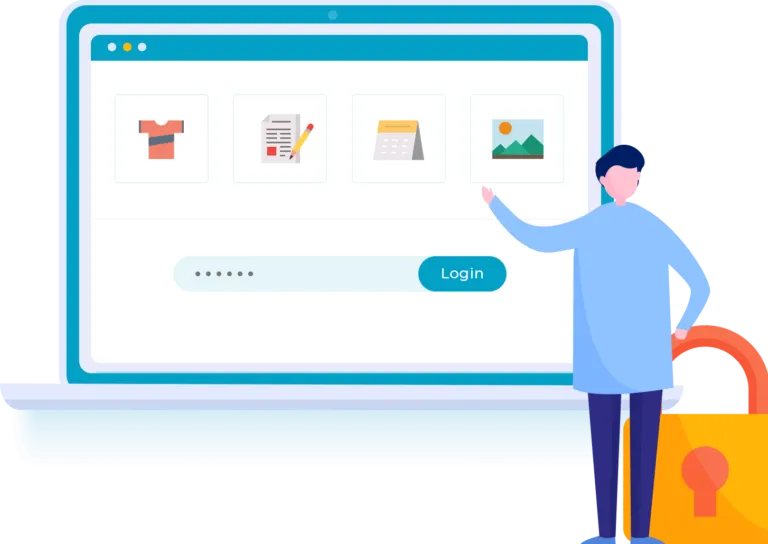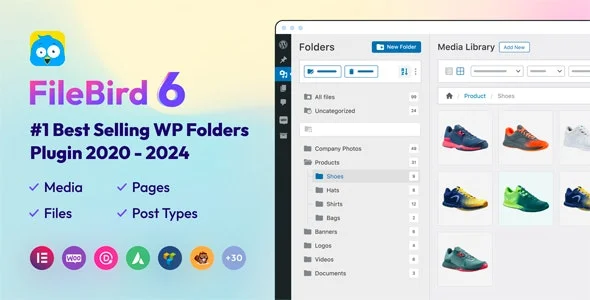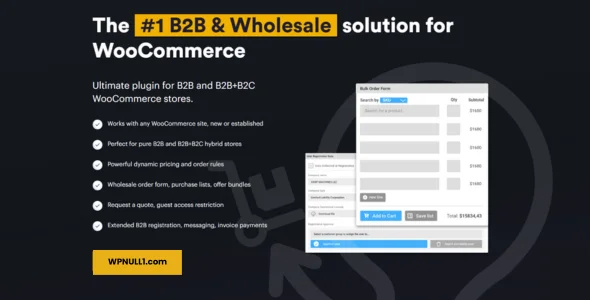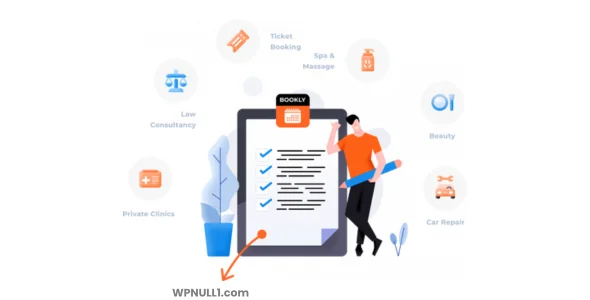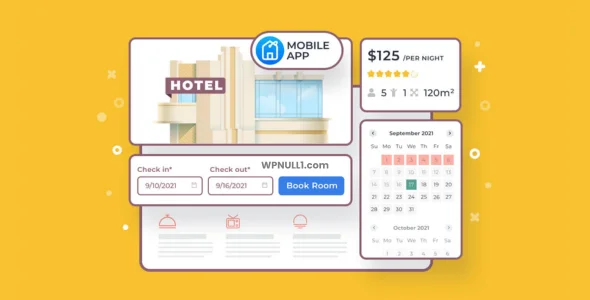Password Protected Categories Nulled is a powerful feature that allows website owners to restrict access to certain categories of content on their WordPress website by using passwords. This tool is especially useful for websites that need to control access to specific areas, such as private content, exclusive resources, or member-only materials. By assigning password protection to particular categories, businesses and content creators can offer gated content to select audiences without requiring complex membership systems or paywalls. Whether you’re running a WooCommerce store with private products or managing a blog with confidential posts, Password Protected Categories provides a simple, flexible solution to control who sees your content.
1. How Password Protected Categories Work
Password Protected Categories Free Download works by adding a layer of security to your website’s content categories. Instead of requiring visitors to log in with an account or go through a lengthy membership process, this feature allows website administrators to protect entire categories with a single password. Once a visitor enters the correct password, they gain access to all content within the protected category. This approach is particularly useful for content that needs to be shared with specific clients, internal teams, or paying customers, without the need to set up complex user roles or permissions.
The feature integrates seamlessly with WordPress and can be applied to categories in posts, pages, and custom post types. Website owners can also use it in eCommerce settings, such as WooCommerce, to hide product categories from the general public while making them accessible to those with the correct password. For example, a store might offer exclusive products to wholesale clients or VIP members by placing these products in a password-protected category.
Setting up Password Protected Categories is simple and can be done directly from the WordPress dashboard. Users can choose which categories to protect, assign passwords, and customize the message that appears to visitors who try to access the protected content. The flexibility of the feature ensures that it can be adapted to meet the specific needs of a wide range of businesses and websites.
2. Benefits of Using Password Protected Categories
Password Protected Categories offers several key benefits for website owners looking to control access to specific content. The first and most obvious advantage is the ability to protect sensitive or exclusive information. Whether it’s private documents, client-only resources, or members-only blog posts, the feature ensures that only those with the correct password can view the protected content.
Another important benefit is the simplicity of the system. Unlike more complex membership plugins or access control systems, Password Protected Categories requires no user registration or management of user roles. This makes it ideal for websites that want to offer private content without the need for a full membership site. The password-based system is also intuitive for end users, who can easily access protected content by entering a single password, making the user experience seamless.
For WooCommerce stores, Password Protected Categories can be a valuable tool for managing access to private product lines, exclusive collections, or wholesale products. Store owners can restrict certain categories of products to specific customers, making it easy to offer special deals or products to select audiences without cluttering the main store with content that isn’t relevant to general shoppers.
Additionally, Password Protected Categories is highly customizable. Administrators can choose different passwords for each category, set custom expiration periods for passwords, and create tailored messages that appear when visitors try to access protected content. This level of control allows website owners to create a secure and user-friendly system that aligns with their business model and content strategy.
3. Use Cases and Applications
There are numerous use cases for Password Protected Categories across different industries and types of websites. Some of the most common applications include:
- Client-Exclusive Content: Agencies, freelancers, and consultants often need to share private resources or reports with specific clients. Password Protected Categories allow them to create a secure area on their website where clients can access deliverables, reports, or project updates without requiring complicated login systems.
- Wholesale and B2B Stores: WooCommerce stores that sell products to wholesale buyers or B2B customers can use Password Protected Categories to create a hidden section of the store accessible only to those clients. This ensures that wholesale prices and products are not visible to regular retail customers, maintaining clear separation between different customer groups.
- Membership Sites and Exclusive Content: Bloggers, educators, and creators who offer premium content or membership-based access to resources can use password protection to gate certain posts or pages. For example, a blog could have a free section and a premium section, with premium content being accessible only to paying subscribers via a password.
- Internal Documentation or Team Resources: Companies can use Password Protected Categories to store and share internal documentation, training materials, or employee resources in a secure area of the website. This is particularly useful for organizations that want to give their team easy access to resources without making the information public.
Who is it Ideal For?
Password Protected Categories is ideal for a wide range of website owners and businesses, including:
- Small Businesses and Freelancers: Freelancers and small businesses that need to share client-specific resources can use this feature to create a secure and easy-to-manage solution for protecting content without the need for a full membership platform.
- WooCommerce Store Owners: E-commerce businesses that want to offer exclusive products or services to certain customers, such as wholesale buyers or VIP clients, will find Password Protected Categories to be a valuable tool for segmenting product visibility.
- Educational Websites and Content Creators: Educators and content creators who provide courses, tutorials, or premium content can use password protection to create exclusive areas for members or paying customers.
- Corporate Websites and Internal Teams: Companies that want to store internal documents, training materials, or sensitive information on their website can use this feature to ensure that only authorized team members can access certain categories.
Pros and Cons
Pros:
- Simple to Use: Password Protected Categories is easy to set up and use, with no need for complex user roles or membership management.
- Flexible Content Control: It works across posts, pages, WooCommerce products, and custom post types, providing a versatile solution for protecting content.
- Customizable: Website owners can set custom passwords, choose different passwords for each category, and customize the error message for visitors trying to access protected content.
- Seamless User Experience: The system is user-friendly for both website owners and visitors, who only need to enter a password to access protected content.
Cons:
- Limited Access Control: Password protection does not offer the same level of detailed access control as membership plugins, as there is no user registration or tracking.
- Password Management Required: For larger websites with multiple protected categories, managing different passwords for each one could become cumbersome.
- No Payment Integration: Unlike membership platforms, Password Protected Categories does not integrate directly with payment systems, so it’s not suitable for websites that need to sell access to content.
Comparison with Alternatives
- Restrict Content ProRestrict Content Pro is a full-featured membership plugin that offers more advanced access control than Password Protected Categories. It allows businesses to sell memberships, track users, and provide tiered access to different types of content. While more powerful, it is also more complex to set up and manage compared to the simplicity of password protection.
- MemberPressMemberPress is a popular WordPress plugin for creating membership websites. It offers extensive features like payment gateways, subscription management, and drip content, making it ideal for businesses that want to sell memberships. However, it is more expensive and complicated than Password Protected Categories, which is better suited for simpler content gating needs.
- WooCommerce MembershipsWooCommerce Memberships is designed specifically for WooCommerce stores and offers more detailed membership options, including product-based memberships and subscription management. It is a robust solution for online stores but may be overkill for businesses that only need basic content protection.
- WP Private Content ProWP Private Content Pro offers similar functionality to Password Protected Categories but provides more user-specific control. It allows for user role-based content access, making it a good alternative for businesses that need to control access based on user accounts rather than passwords.
Password Protected Nulled is a simple, effective solution for website owners looking to control access to specific content on their WordPress site. With its ease of use, customizable settings, and flexibility, it offers a straightforward way to protect private content, whether for clients, members, or internal teams. While it may not provide the advanced access control of full membership plugins, its simplicity makes it ideal for businesses that need a basic content protection system. Whether you’re running a WooCommerce store, a membership site, or a corporate website, Password Protected Free Download offers a practical and user-friendly option for managing who can access your content.
Changelog
-----------------------------------
2.1.24
Release date 11 December 2024
FIX
Document Library Pro - category filter was not displaying protected categories when option enabled
FIX
Document Library Pro - front end submission form protected category display issue
DEV
Tested up to WordPress 6.7.1
2.1.23
Release date 8 Oct 2024
FIX
Document Library Pro
- Unlocked protected categories were not displayed
in 'Folder' layout and 'Table' layout's category column
2.1.22
Release date 12 Sept 2024
FIX
Document Library Pro - Hidden categories were displayed in 'Folder' layout and 'Table' layout's category column
FIX
Skipping wizard was not saving options data on fresh installs
